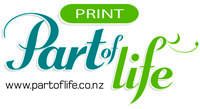Print: Part of Life
 The Print: Part of Life campaign aims to remind consumers of print’s irreplaceable role in their lives and inform them of what print can offer. There are a lot of common misconceptions about the printing industry so we want to present people with the facts about print so they can be fully informed when making sustainable choices. For business people, particularly those who work in marketing, we want to reinforce the many benefits that print offers them as part of the marketing mix.
The Print: Part of Life campaign aims to remind consumers of print’s irreplaceable role in their lives and inform them of what print can offer. There are a lot of common misconceptions about the printing industry so we want to present people with the facts about print so they can be fully informed when making sustainable choices. For business people, particularly those who work in marketing, we want to reinforce the many benefits that print offers them as part of the marketing mix.
The campaign aims to inform consumers and print buyers (marketing professionals and advertising agencies) about the benefits of using print. It also provides information and a united voice for the printing industry.
Print is a cornerstone of everyday life and has been for hundreds of years. It’s the morning newspaper, your child’s favourite book, a school textbook, the packaging your cereal comes in, a treasured family photo. You can touch print, smell print – print is real.
Another great thing about print is its permanence. You can keep a book forever and lend it out to dozens of friends. Or give someone a magazine you’ve finished with or cut out a newspaper article to keep for posterity. No other medium is treasured like print is.
From a marketer’s point of view, print is just as effective today as it’s always been. Because consumers trust print it’s a great place to start a dialogue, for example with a newspaper ad or a billboard, that continues the communication by driving customers to a website for more information.
Case Studies
Print works. But don't just take our word for it. Click here to find case studies about how using print has significantly helped leading New Zealand businesses to communicate with their customers.
Environment
We take our impact on the environment seriously. We are proud of the steps we have made to reduce the amount of waste and energy we use. Over the last 20 years the printing industry has reduced its carbon footprint by 97%, a huge achievement that is matched by very few other industries. Specifically, in the last 20 years the print industry has:
- reduced the use of mineral inks by using vegetable inks
- developed Computer To Plate (CTP) technology which in most cases removes the need for film thus eliminating chemicals used as developers
- reduced the usage of solvents by using water based systems
- reduced waste by allowing remote digital proofing
- reduced the usage of chlorine bleaching by using non dioxin bleaching
Many people like to think that in the digital age CO2 emissions are lower, yet it takes five times as much CO2 to make a CD or DVD as it takes to make an entire newspaper.
In New Zealand, newspapers are printed on fully recyclable newsprint made at the Tasman mill at Kawerau. The wood fibre comes from sustainably managed pine forests in the central North Island, the wood pulp is made from trimmings left over from the timber industry.
Currently, 70% of all paper used in New Zealand is recovered to be reused. Most waste paper is used to make paperboard. Small quantities are also used in making printing and writing paper, tissues and toilet paper. Corrugated card, paper bags, envelopes and building paper also have recycled paper content. Moulded pulp packaging such as egg cartons, produce trays and hospital equipment are also manufactured from recycled paper.
Much of the high-end paper used in printing is sourced from sustainable forests here and around the world. Europe’s forests are actually increasing by an area equivalent to 1.5 million rugby fields every year, all thanks to sustainable forest management.
Paper can be recycled up to seven times and 70% of paper in New Zealand is recycled, one of the leading recycling rates for paper in the world. With new technologies and a firm resolve to respect the environment, we expect this figure to increase even more.
